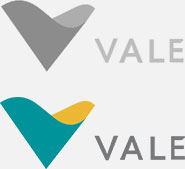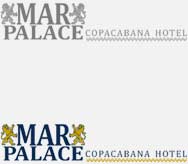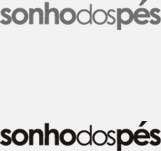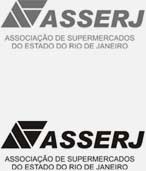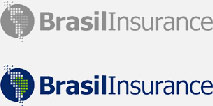Aplication
Stimulation of Knowledge
The aim is to stimulate the development of the Organizational Knowledge and the change of employee’s behavior. Through daily reflection exercises focused on the perception of behavior and/or performance indicators, employees will be able to identify their strengths and weaknesses, as well as what has to be improved.
The results generated by the methodology are measured and analyzed in groups, which will make the following benefits possible, among others:
- 1) Socialize and pave the Organizational Knowledge;
- 2) Expand the self-evaluation on each one’s performance;
- 3) Allow the exchange of experiences and better management practices.
Department, store or company image
The aim is to evaluate specific audience’s evaluation, such as employees, external or internal clients in relation to a specific department, store or company. This evaluation uses image indicators previously chosen, which analysis will provide the following benefits, among other:
- 1) Know the perceived image of a department, store or company by the target audience;
- 2) Guide investments in actions to improve this perceived image;
- 3) Guide investments in training, leading to results improvement.
Additionally, depending on the objectives of the evaluation, the survey can be performed in a way that questions work, simultaneously, to inform the target audience and relevant issues to the evaluation.
Clients’ perception of their shopping experience in stores
The aim is to evaluate clients’ perception about their shopping experience in a particular store or in a group of stores through previously chosen indicators, which analysis will provide the following benefits, among others:
- 1) Know clients’ perception regarding the strong and weak points of shopping experience;
- 2) Guide HR and/or Marketing investments leading to improved results;
- 3) Compare the performance between stores, allowing the association of perception to prizes and/or financial indicators.
Additionally, it is possible to compare clients’ to employees’ perceptions.
Regular Organizational Atmosphere
The aim is to regularly evaluate the perception employees have in relation to the organizational atmosphere of the company. This evaluation uses previously chosen indicators, which analysis provide the following benefits, among others:
- 1) Know the image employees have regarding the company’s atmosphere;
- 2) Guide investments in actions that improve employees’ performance leading to improved results.
Alternatively, it is possible to evaluate only one or a few aspects of the Organizational Culture, such as Values. In this case, it is possible to verify the adherence to the company’s actions’ values and, if necessary or desirable, guide alignment and stimulus actions to employees’ commitment.
Impact of training – Knowledge “Adherence”
The aim is to evaluate the knowledge retention on program/training participants. This evaluation uses previously selected knowledge indicators in the level of learning and application/results. It takes place in two stages: right after the end of the program/training to define the initial status of indicators and some time later to point the degree of adherence over time. The main benefits are:
- 1) Evaluate retention/adherence of knowledge right after the training’s end;
- 2) Evaluate the retention/adherence of knowledge over time;
- 3) Evince, at the level of each class, the best time to recycle necessary knowledge;
- 4) Provide opportunities for employees to review the fundamental concepts of programs/trainings;
- 5) Guide investments in training leading to improved results.
Trainings impact – behavior change
The aim is to evaluate participants’ behavior changes stimulated by training based on perception of people who daily interact with them. This evaluation uses behavior indicators previously chosen. It happens in two stages:
- 1) Before the beginning of training: to define the initial status of indicators and guide the training customization.
- 2) After training: to verify the impact of training on participants’ behavior change.
Mapping knowledge and/or competences
The aim is to map employee’s perception in relation to specific knowledge and/or competences. The main benefits are:
- 1) Stimulate employees’ self-knowledge;
- 2) Map group’s knowledge/competences;
- 3) Guide investments in training leading to improved results.
Impact of training/marketing in stores sales
The aim is to measure the relation sale-training by salespeople’s perception. This evaluation can be anchored to financial indicators. The main benefits are:
- 1) Provide opportunities for employees to review the fundamental concepts of trainings;
- 2) Guide investments in training leading to improved results;
- 3) Calculate the return of training in sales (this goal should be long-term).
Additionally, the same can be done to evaluate marketing actions’ impact on sales instead of training impacts.
Integrated Evaluation – Employees performance
The aim is to rise teams’ performance and increase synergy among all. Each employee will periodically do a self-evaluation and must evaluate other team members, based on the perception of previously chosen performance indicators. The main benefits are:
- 1) Each employee will know the impact of working in a team, identifying their strengths and things to be improved, according to the vision of the team itself;
- 2) Creation of action plans to rise team’s performance, generating a greater commitment of each employee in their own development, at the same time.
Evaluation by committee – Performance of candidates/employees, processes, systems, etc.
The aim is to evaluate based on a specialized committee’s perception about previously chosen indicators – candidates/employees, processes, systems, etc. The main benefits are:
- 1) Provide a collegiate comparison of alternatives (candidates/employees, processes, systems) based on its appropriateness to the objectives;
- 2) In the case of evaluation of candidates/employees, it will also be possible to identify the need for trainings and behavior changes.
Usability – Prototype, product, system and processes
The aim is to evaluate and map users’ performance and behavior, on the usability in a virtual environment or not, depending on the desired focus. This evaluation uses knowledge indicators previously chosen in the successes levels in the task performance, learning and result directly with the user’s interaction in the process-product in real time.
- 1) Analysis of demanded characteristics of a product in a context of specific use;
- 2) Analysis of the interaction process between user and product;
- 3) Analysis of efficiency (agility in the viability of the project), effectiveness (safety of obtained desired results) and satisfaction resulting from the product use.
Copyright 2013 Feel BR Ltda. | contato@feelbr.com.br




